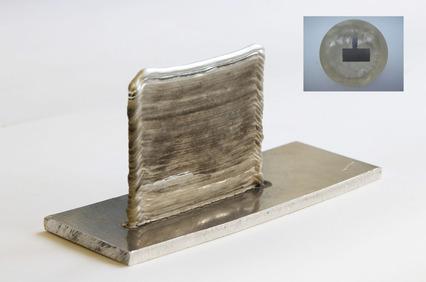当前位置:
X-MOL 学术
›
Electroanalysis
›
论文详情
Our official English website, www.x-mol.net, welcomes your
feedback! (Note: you will need to create a separate account there.)
Scanning Electrochemical Microscopy (SECM) Investigation of 3D Printed Parts Produced by CMT Welding Technology
Electroanalysis ( IF 2.7 ) Pub Date : 2020-01-17 , DOI: 10.1002/elan.201900678 Zoltán Meiszterics 1 , Abdellilah Asserghine 2 , András Kiss 2, 3 , Lívia Nagy 2, 3 , Tamás Zsebe 1 , Géza Nagy 2, 3
Electroanalysis ( IF 2.7 ) Pub Date : 2020-01-17 , DOI: 10.1002/elan.201900678 Zoltán Meiszterics 1 , Abdellilah Asserghine 2 , András Kiss 2, 3 , Lívia Nagy 2, 3 , Tamás Zsebe 1 , Géza Nagy 2, 3
Affiliation

|
In the field of manufacturing technology an exciting revolution is in progress today. The different methods of the so called additive manufacturing (AM) technologies are under fast developments. Several versions of them are called 3D printing. Less interest has been given to study the corrosion resistance character of the differently made 3D printed metal alloy items. In this work corrosion behaviour of 3D printed AlMg4.5Mn0.7 alloy samples were investigated. Conventional methods like open circuit potential measurements, Tafel plots taking and scanning electrochemical microscopy (SECM) – with pH measuring tungsten micro‐tip and micro‐disc type Pt electrode were used. The metal samples were embedded in epoxy resin. 2D SECM images and line scans were made to see the local changes of oxygen concentration. Flame atomic absorption spectroscopy was used for measuring the metal composition of manufacturing wire and printed sample. The local activity of the surface spots were measured using approach curves recorded in case of ferrocene methanol mediator.
中文翻译:

CMT焊接技术生产的3D打印零件的扫描电化学显微镜(SECM)研究
在制造技术领域,当今正在进行令人激动的革命。所谓的增材制造(AM)技术的不同方法正在快速发展。它们的几种版本称为3D打印。研究不同制造的3D打印金属合金产品的耐腐蚀特性的兴趣已经减少。在这项工作中,研究了3D打印的AlMg4.5Mn0.7合金样品的腐蚀行为。使用常规方法,如开路电势测量,Tafel图获取和扫描电化学显微镜(SECM)–用pH值测量钨微尖端和微盘式Pt电极。金属样品被嵌入环氧树脂中。进行2D SECM图像和线扫描以查看氧浓度的局部变化。火焰原子吸收光谱法用于测量生产线材和印刷样品的金属成分。使用在二茂铁甲醇介体的情况下记录的逼近曲线来测量表面斑点的局部活性。
更新日期:2020-01-17
中文翻译:

CMT焊接技术生产的3D打印零件的扫描电化学显微镜(SECM)研究
在制造技术领域,当今正在进行令人激动的革命。所谓的增材制造(AM)技术的不同方法正在快速发展。它们的几种版本称为3D打印。研究不同制造的3D打印金属合金产品的耐腐蚀特性的兴趣已经减少。在这项工作中,研究了3D打印的AlMg4.5Mn0.7合金样品的腐蚀行为。使用常规方法,如开路电势测量,Tafel图获取和扫描电化学显微镜(SECM)–用pH值测量钨微尖端和微盘式Pt电极。金属样品被嵌入环氧树脂中。进行2D SECM图像和线扫描以查看氧浓度的局部变化。火焰原子吸收光谱法用于测量生产线材和印刷样品的金属成分。使用在二茂铁甲醇介体的情况下记录的逼近曲线来测量表面斑点的局部活性。











































 京公网安备 11010802027423号
京公网安备 11010802027423号